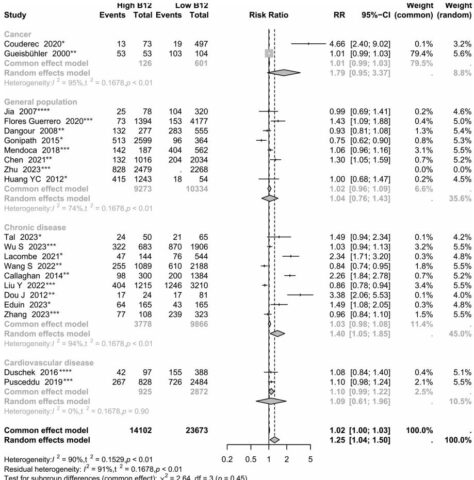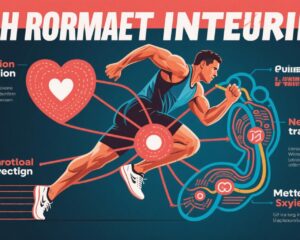Introduction
Modern lifestyles marked by sedentary behavior, poor diet, and stress have contributed to a rising global burden of cardiovascular disease, neurological degeneration, and metabolic disorders such as type 2 diabetes. These conditions not only diminish quality of life but are leading causes of death and disability worldwide. Exercise is a cornerstone of prevention and therapy for these diseases, but the optimal approach remains under ongoing study. High-Intensity Interval Training (HIIT) has recently emerged as a time-efficient, potent exercise modality that delivers systemic health benefits across multiple organ systems. This article presents an in-depth review of the protective effects of HIIT on cardiovascular, neurological, and metabolic health, grounded in current scientific evidence and clinical insights.
Understanding High-Intensity Interval Training
HIIT involves brief bursts of intense physical activity—typically at 80-95% of one’s maximum heart rate—alternated with periods of low-intensity recovery or rest. These sessions usually last from 10 to 30 minutes, making HIIT an attractive option for individuals limited by time but seeking considerable health gains. Compared to traditional moderate-intensity continuous training (MICT), HIIT stimulates distinct molecular and physiological changes that translate into enhanced systemic resilience.
The Cardiovascular Safeguards of HIIT
Cardiovascular disease remains the leading cause of death globally. HIIT has demonstrated multiple protective mechanisms for heart and blood vessels:
– Improved Cardiac Function: HIIT enhances both systolic and diastolic heart function. Studies using echocardiography reveal increased stroke volume and improved myocardial efficiency after consistent HIIT interventions.
– Vascular Health: HIIT promotes endothelial function, increasing nitric oxide bioavailability, which leads to vasodilation and reduced blood pressure. This effect contributes to lowering hypertension—a major cardiovascular risk factor.
– Lipid and Inflammatory Profiles: Regular HIIT reduces low-density lipoprotein (LDL) cholesterol and systemic inflammation markers like C-reactive protein, which are implicated in atherosclerosis.
– Autonomic Regulation: HIIT improves heart rate variability, indicating better autonomic nervous system balance with enhanced parasympathetic tone, which correlates with lower cardiovascular risk.
These benefits have been documented across diverse populations, including healthy adults, those with heart failure, and patients undergoing cardiac rehabilitation, highlighting HIIT’s adaptability and effectiveness.
Neurological Benefits of HIIT
Beyond the heart, the brain also benefits substantially from HIIT through multiple interrelated pathways:
– Neuroplasticity and Cognitive Enhancement: HIIT upregulates brain-derived neurotrophic factor (BDNF), which supports the growth and maintenance of neurons. Increased BDNF correlates with improved memory, executive function, and learning capacity.
– Neuroprotection: Evidence shows HIIT can reduce oxidative stress and neuroinflammation, processes implicated in neurodegenerative diseases like Alzheimer’s and Parkinson’s. Animal models demonstrate slowed progression of cognitive decline with HIIT.
– Mood and Mental Health: HIIT stimulates the release of endorphins and upregulates neurotransmitters such as serotonin and dopamine, with benefits for depression and anxiety.
– Improved Cerebral Blood Flow: Enhanced cardiovascular function from HIIT contributes to better cerebral perfusion, which supports brain health and function.
By improving multiple dimensions of brain health, HIIT represents a promising exercise modality for maintaining cognitive vitality across the lifespan.
Metabolic Enhancements Driven by HIIT
Metabolic syndrome and type 2 diabetes remain substantial public health challenges. HIIT offers targeted benefits that help correct and prevent metabolic dysfunction:
– Improved Insulin Sensitivity: HIIT increases glucose uptake in skeletal muscles and improves insulin signaling pathways, enabling better blood sugar regulation.
– Enhanced Mitochondrial Function: HIIT stimulates mitochondrial biogenesis, increasing the energy-producing capacity of cells, which combats metabolic decline.
– Body Composition: Despite shorter sessions, HIIT effectively reduces visceral fat and enhances lean muscle mass, improving overall metabolic profile.
– Hormonal Balance: HIIT modulates appetite-regulating hormones such as leptin and ghrelin, assisting in weight management.
– Lipid Metabolism: Improvements in lipid oxidation and reduced triglyceride levels have been reported post-HIIT training.
Collectively, these metabolic improvements underscore HIIT’s value as a therapeutic exercise strategy for individuals with insulin resistance, obesity, and related disorders.
Addressing Common Misconceptions about HIIT
Despite its benefits, public perception of HIIT is often clouded by misconceptions:
| Misconception | Reality |
|——————————————-|————————————————————–|
| “HIIT is too dangerous for most people.”| When properly supervised and individualized, HIIT is safe for a wide range of populations, including older adults and those with chronic diseases. Pre-exercise screening is essential. |
| “Only elite athletes benefit from HIIT.”| Scientific studies confirm benefits across age groups and fitness levels, from beginners to athletes. |
| “HIIT requires expensive equipment.” | Many HIIT routines use bodyweight exercises or simple equipment like jump ropes or stationary bikes. |
| “HIIT is all about exhausting yourself.”| Intensity is relative; intervals can be adapted to individual capacity without causing injury or excessive fatigue. |
Educating about these realities fosters better adoption and adherence to HIIT programs.
Practical Guidelines and Expert Recommendations
Experts recommend incorporating HIIT two to three times per week as part of a balanced exercise regimen. Key considerations include:
– Initial consultation with healthcare providers, especially for individuals with known health issues
– Starting with low-volume HIIT and gradually increasing session intensity and duration
– Including proper warm-up and cool-down phases to enhance safety
– Combining HIIT with other forms of exercise, including strength training and flexibility work, for holistic health
Dr. Stephanie Thompson, an exercise physiologist at the American College of Sports Medicine, emphasizes, “HIIT offers an effective, evidence-based method to improve cardiovascular and metabolic health, but personalization is key to optimize benefits and minimize risks.”
Patient Scenario: Meeting John
John, a 55-year-old software engineer, has recently been diagnosed with elevated blood pressure and prediabetes. Sedentary and pressed for time, he found it challenging to commit to traditional hour-long workouts. Upon his physician’s recommendation, John began a supervised HIIT program tailored to his fitness level—short cycles of brisk walking and jogging using timed intervals three times weekly.
After 12 weeks, John’s blood pressure improved significantly, his fasting glucose levels normalized, and he reported feeling more energetic and less stressed. Moreover, cognitive improvements helped him concentrate better at work. John’s experience illustrates HIIT’s practical applicability and benefits even in busy, middle-aged adults managing chronic health risks.
Conclusion
High-Intensity Interval Training has emerged as a powerful exercise approach that transcends conventional fitness benefits by providing comprehensive protection for the cardiovascular system, nervous system, and metabolic regulation. Supported by a growing body of rigorous scientific evidence, HIIT promotes heart health, cognitive resilience, and metabolic fitness in an efficient, accessible manner. As lifestyle-related diseases continue to burden healthcare globally, adopting HIIT protocols, under professional guidance, offers a promising strategy to improve health outcomes. Future research should focus on optimizing individualized HIIT regimens and expanding access for high-risk populations to maximize public health impact.
References
1. Gibala MJ, Little JP, MacDonald MJ, Hawley JA. Physiological adaptations to low-volume, high-intensity interval training in health and disease. J Physiol. 2012 Mar 1;590(5):1077-84. doi:10.1113/jphysiol.2011.224725
2. Weston KS, Wisløff U, Coombes JS. High-intensity interval training in patients with lifestyle-induced cardiometabolic disease: a systematic review and meta-analysis. Br J Sports Med. 2014 Aug;48(16):1227-34. doi:10.1136/bjsports-2013-092576
3. Maass A, Düzel S, Goerke M, Becke A, Sobieray U, Neumann K, Lovden M, Lindenberger U, Backman L, Braun-Dullaeus RC, Ahrens D, Heinze HJ, Müller NG. Vascular hippocampal plasticity after aerobic exercise in older adults. Mol Psychiatry. 2015 Feb;20(2):200-7. doi:10.1038/mp.2013.197
4. Hannan AL, Hing W, Simas V, Climstein M, Coombes JS, Jayewardene D, Orr R. High-Intensity Interval Training versus Moderate-Intensity Continuous Training within Cardiac Rehabilitation: A Systematic Review and Meta-Analysis. Open Access J Sports Med. 2018 Sep 24;9:1-17. doi:10.2147/OAJSM.S156973
5. Boutcher SH. High-intensity intermittent exercise and fat loss. J Obes. 2011;2011:868305. doi:10.1155/2011/868305
6. Kjølhede T, Langeskov-Christensen M, Bjerre Christiansen S, Stenager E, Dalgas U. Effects of High-Intensity Interval Training on Spasticity and Walking Capacity in Patients with Multiple Sclerosis. J Neurol Neurosurg Psychiatry. 2017 Aug;88(8):655-661. doi:10.1136/jnnp-2016-315867
7. American College of Sports Medicine. ACSM’s Guidelines for Exercise Testing and Prescription. 11th ed. Wolters Kluwer; 2021.



